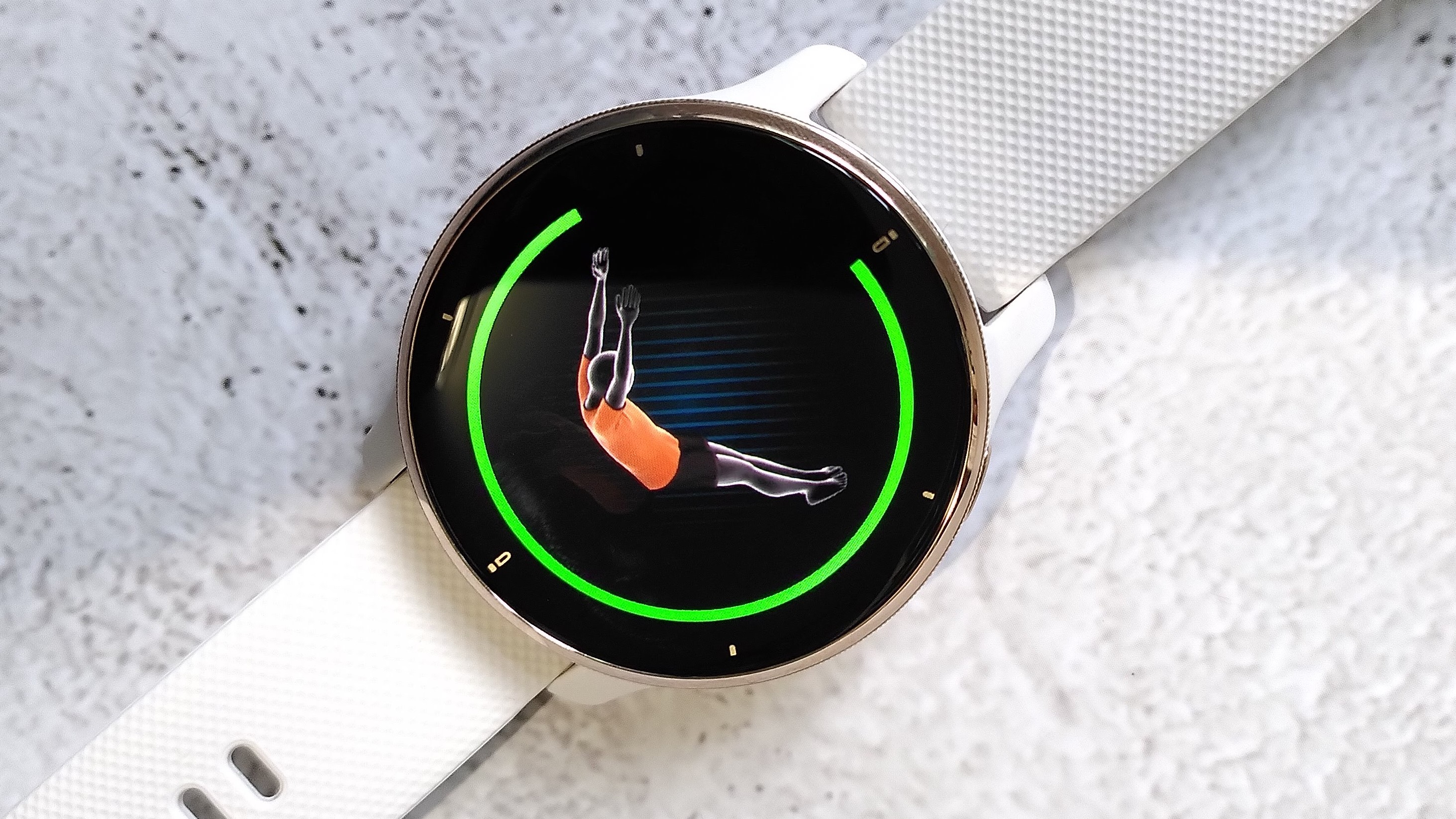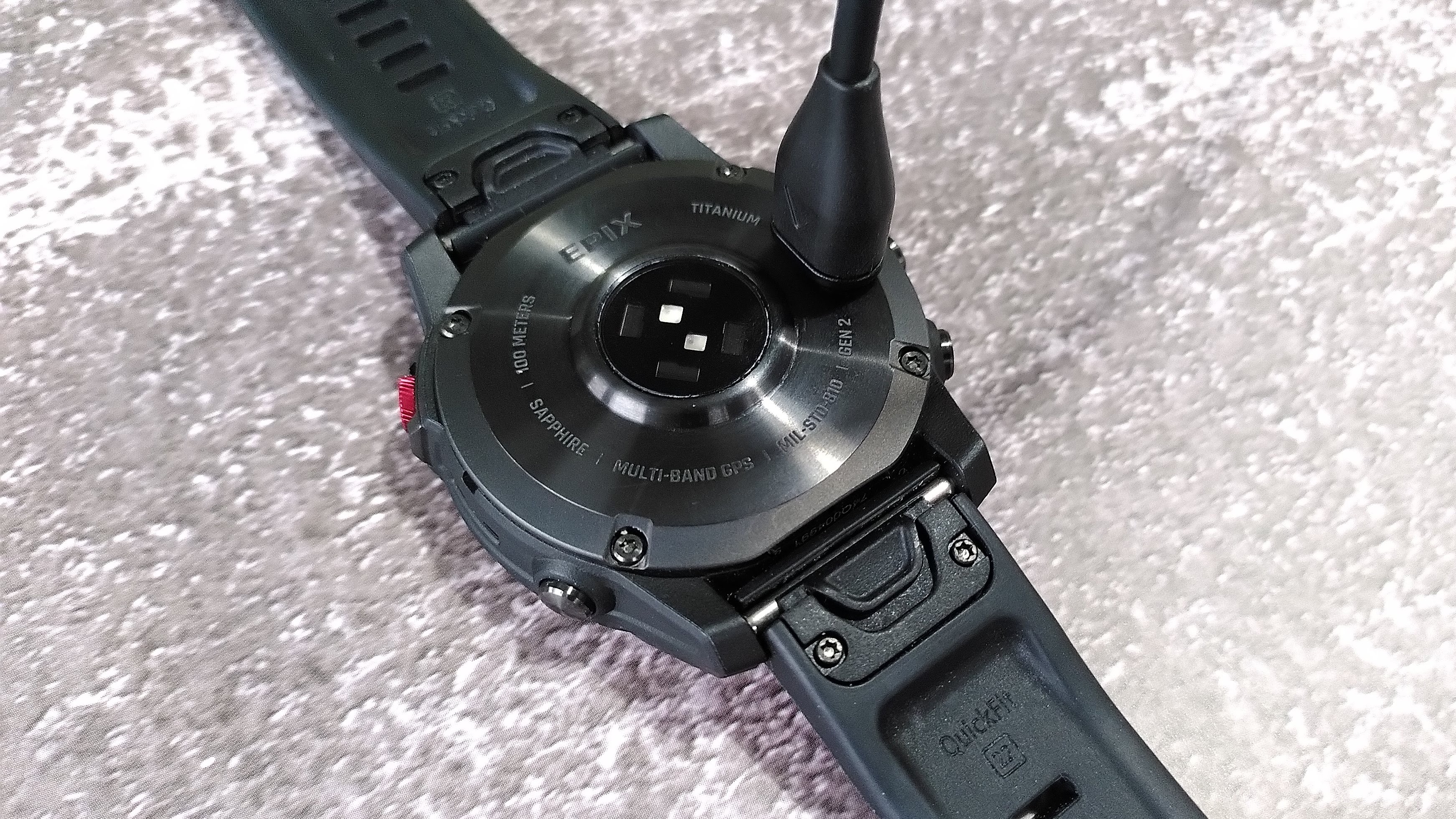Garmin is working on a new OLED watch with super long battery life

We could soon see the first Garmin watch with both a bright OLED display and solar charging, giving you great-looking graphics and extra-long battery life. Garmin has registered a patent for an OLED display with a photovoltaic layer for use in portable electronic devices – and smartwatches in particular.
Until now, if you've been thinking of picking up a Garmin watch, you've had to make a choice: which do value more, battery life or display quality? Most of the watches in Garmin's current range (including the newly released Fenix 7 and Instinct 2) are available with the company's Power Glass, which keeps the battery topped up between charges. If your Instinct 2 Solar gets enough sunlight, it can even keep running indefinitely.
This is a huge boon for anyone who enjoys running or cycling outside, but there's a downside – these watches all use memory-in-pixel (MIP) displays, which although fine in most lighting conditions, aren't as vibrant as OLED screens. One of our few complaints about the Fenix 7 was the relatively low contrast and muddy colors of its display – an effect that's magnified by its blue-tinted backlight.
Looks or longevity
Watches like the Garmin Venu 2, Venu 2 Plus, and Epix (Gen 2) are graced with vibrant OLED displays that look much sharper and make it easier to check messages and workout stats at a glance. Their higher refresh rate means they're also capable of displaying animated yoga and pilates workouts that you can follow along from your wrist.
However, OLED displays use more power than MIP, and none of these watches are available in photovoltaic variants. Their battery lives are nothing to be sniffed at (the Epix lasted two weeks in our tests with regular workout tracking), but they need charging more frequently.

"Battery life is important for these devices as it is aggravating for users to stop wearing a device for recharging," Garmin's patent explains. "Some attempts have been made to equip smartwatches with semitransparent solar panels such as by using a discrete solar cell positioned on top of (or over) the watch's display.
"However, the presence of such a solar cell overlay degrades visibility of the display module. Accordingly, there is a need for an integrated energy-collecting display module that collects solar energy without substantially obscuring its display."
Sign up for breaking news, reviews, opinion, top tech deals, and more.
An OLED display that's obscured by a photovoltaic layer would be no use, so instead, Garmin has devised an alternative that should give you the best of both worlds.
The best of both
All OLED displays use red, green and blue subpixels to represent different colors. Garmin's patent describes a type of display where, rather than placing a layer of photovoltaic material over the display, photovoltaic regions are interspersed in between the subpixels. It's possible that this type of display would be less bright and sharp than a standard OLED display, but at this early stage we can't say.
Although watches are perhaps the most obvious use for this type of display, Garmin explains that it could also work for hand-held GPS units similar to the InReach 2 launched earlier this year, or bike computers. These devices are designed for use outdoors, so solar charging makes a lot of sense, and an OLED display would make for bright, detailed maps that are easier to check when navigating.
It's impossible to say if or when this display tech will find its way onto runners' and cyclists' wrists; after all, a patent doesn't guarantee that a consumer product will ever hit the shelves. It sounds like a smart move for Garmin though, and one that would really give its outdoor adventure watches an edge.

Cat is TechRadar's Homes Editor specializing in kitchen appliances and smart home technology. She's been a tech journalist for 15 years, having worked on print magazines including PC Plus and PC Format, and is a Speciality Coffee Association (SCA) certified barista. Whether you want to invest in some smart lights or pick up a new espresso machine, she's the right person to help.